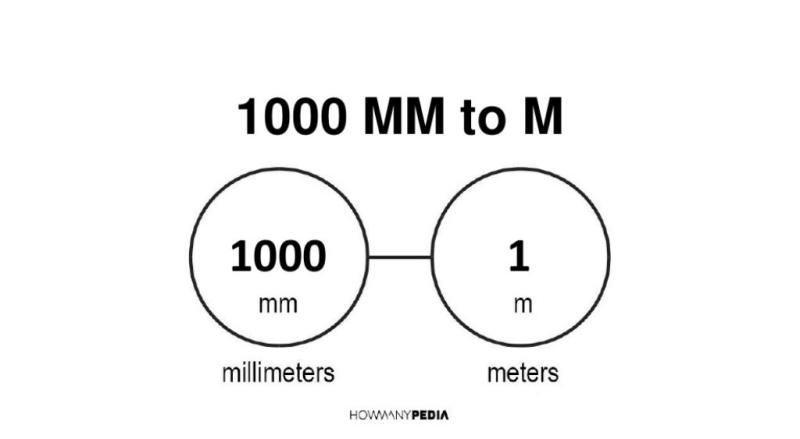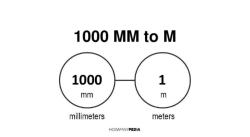What is the difference between m and mm?
The symbols 'm' and 'mm' represent units of measurement, specifically for length or distance. Here's the distinction between 'm' (meters) and 'mm' (millimeters):
Meter (m):
- The meter is the base unit of length in the International System of Units (SI). It is defined as the distance that light travels in a vacuum in exactly 1/299,792,458 seconds. The meter is a standard unit for measuring longer distances. For example:
- 1 meter = 100 centimeters
- 1 meter = 1,000 millimeters
- The meter is the base unit of length in the International System of Units (SI). It is defined as the distance that light travels in a vacuum in exactly 1/299,792,458 seconds. The meter is a standard unit for measuring longer distances. For example:
Millimeter (mm):
- The millimeter is a subunit of the meter and is equal to one-thousandth of a meter. It is used for measuring smaller lengths, often in situations where precision is required. For example:
- 1 millimeter = 0.001 meters
- 1 millimeter = 0.1 centimeters
- The millimeter is a subunit of the meter and is equal to one-thousandth of a meter. It is used for measuring smaller lengths, often in situations where precision is required. For example:
In summary, the key difference is the scale of measurement. A meter is a larger unit, while a millimeter is a smaller unit. The conversion between them involves multiplying or dividing by factors of 1,000 because there are 1,000 millimeters in a meter.
How does 'm' differ from 'mm' in various contexts?
The difference between "m" and "mm" depends on the context in which they are used. Here are some general points to consider:
1. Length measurement:
- m: Represents meters, a unit of length in the International System of Units (SI).
- mm: Represents millimeters, 1/1000th of a meter.
- In length measurement, "mm" is always a smaller unit than "m."
2. Other contexts:
- m: Can represent various units or quantities depending on the context, such as mass (grams), moles (chemistry), or minutes (time).
- mm: Used less frequently outside of length measurement. It can represent millimeters of mercury (mmHg), a unit of pressure.
3. Writing style:
- m: Usually used when referring to entire units of meters.
- mm: Typically used when specifying smaller, fractional measurements within meters.
Here are some specific examples:
- Length: A door is 2 m tall. A screw is 5 mm long.
- Mass: A package weighs 50 g (not "mg").
- Chemistry: The concentration is 1 mol per liter (not "mmol/L").
- Time: The experiment lasted 10 min (not "mm").
- Pressure: The blood pressure reading is 120/80 mmHg.
It's important to pay attention to the context and specific units involved to accurately interpret the difference between "m" and "mm."


